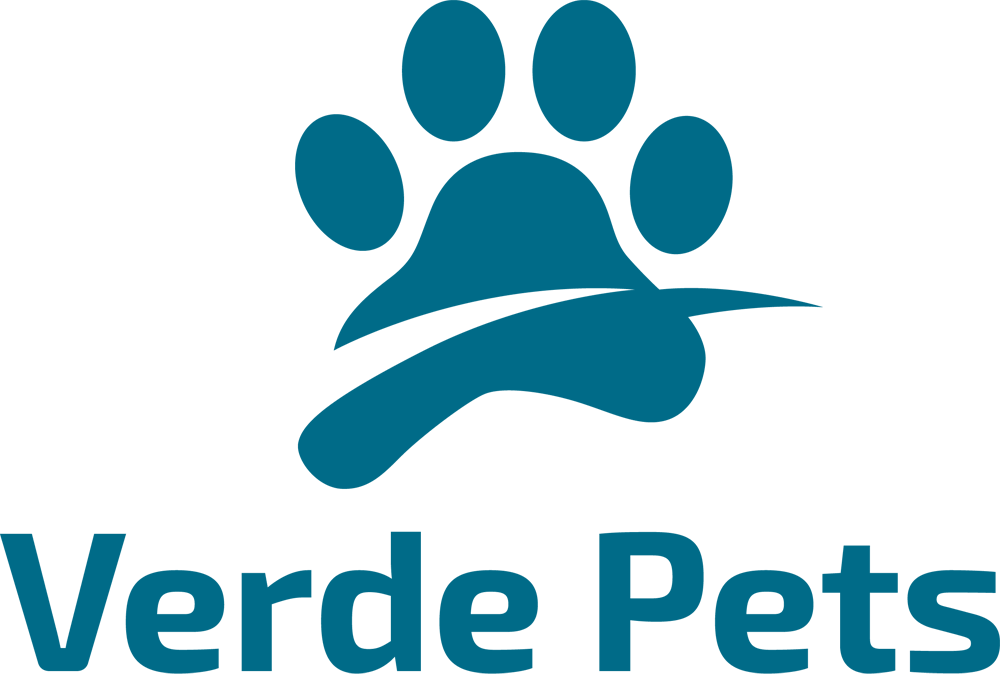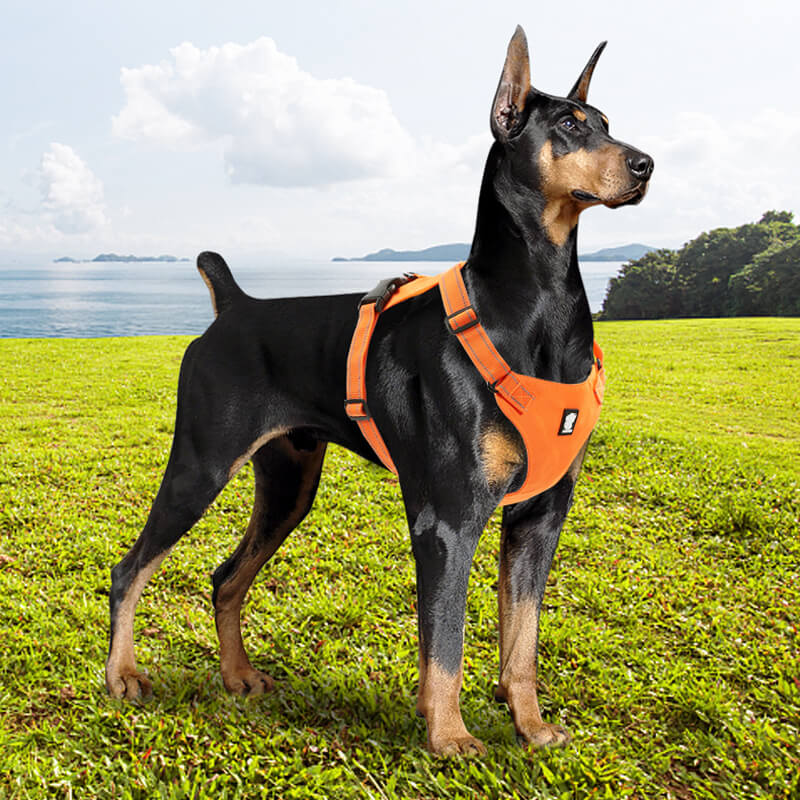Dog harnesses are more than just a tool for controlling your pet during walks; they are crucial for ensuring safety and comfort. Unlike traditional collars, harnesses distribute pressure evenly across a larger area of your dog’s body, reducing strain on the neck and providing better control for the owner. Ideal for training, routine walks, and adventures, the right harness can improve the walking experience and enhance safety in busy or unfamiliar environments.
In this guide, we’ll explore the different types of dog harnesses available, helping you make an informed decision based on your dog’s specific needs and lifestyle. From tiny Chihuahuas to robust Saint Bernards, there’s a harness for every type of canine companion.
Types of Dog Harnesses
When it comes to dog harnesses, variety is abundant, each type designed with specific purposes and benefits in mind. Here are some of the most popular types:
- No-Pull Harnesses: These harnesses are designed to discourage pulling without causing discomfort. They typically have a front leash attachment point that gently steers your dog to your side when they try to pull ahead, making them ideal for training dogs to walk calmly by your side.
- Step-In Harnesses: As the name suggests, your dog steps into this type of harness. It’s a great choice for pets who dislike having items put over their head. Once their legs are in, the harness clips together at the back.
- Vest Harnesses: Offering more coverage and often equipped with extra padding, vest harnesses are designed for comfort. They are particularly good for smaller breeds or dogs with sensitive skins.
- Adjustable Harnesses: These harnesses can be altered to fit your dog as perfectly as possible. They are particularly useful for growing puppies or dogs that are between standard sizes.
- Harnesses with Handles: Particularly useful for assisting large dogs or those with mobility issues, these harnesses include a handle on the back, allowing owners to lift or aid their dogs easily.
Each type of harness has its own set of advantages, and the best choice depends largely on your dog’s size, temperament, and the activities you engage in together.
Choosing the Right Harness for Your Dog
Selecting the right harness is vital for ensuring your dog’s comfort and safety. Here are some factors to consider:
- Size and Fit: Measure your dog’s chest and neck before buying a harness to ensure a snug fit. A poorly fitting harness can cause discomfort or even escape.
- Material: Look for durable materials that can withstand your dog’s activity level while also being comfortable and easy to clean.
- Activity Level: Consider what you and your dog will be doing. If you’re into hiking or running, look for a harness that provides good mobility and is made from breathable materials.
By considering these factors, you can choose a harness that not only fits well but also complements your dog’s lifestyle.
Safety Features in Dog Harnesses
Safety should never be compromised when it comes to selecting a dog harness. Modern harnesses come equipped with a variety of safety features:
- Reflective Strips: These are essential for dogs that will be walked early in the morning or late at night. Reflective strips ensure your dog is visible to motorists and other pedestrians.
- Strong Buckles and Durable Straps: High-quality buckles and straps ensure the harness holds up to pulling and can’t be easily broken or slipped off.
- Padding: Padding helps protect your dog from the pressure of the harness, especially if they pull. It also adds an extra layer of comfort.
These features are crucial for maintaining your dog’s safety and comfort, no matter the environment or situation.
Harnesses for Small Dogs
Small dogs have specific needs when it comes to harnesses. Due to their delicate frames and lower body strength, harnesses for small dogs should be:
- Lightweight: Heavy harnesses can be uncomfortable for small dogs to carry around, possibly even restricting their movement.
- Soft Materials: To protect their sensitive skin, soft materials and ample padding are essential to prevent rubbing and irritation.
- Easy to Put On and Take Off: Small dogs are often less patient when it comes to putting on harnesses, so designs that are easy to maneuver are preferable.
Harnesses for small dogs should prioritize comfort and ease of use, ensuring that your petite companion feels as good as they look during their daily adventures.
Harnesses for Large Dogs
When outfitting a large dog with a harness, strength and durability become paramount. These dogs not only bring more power into play but also often require more control and guidance. Harnesses for large breeds should feature:
- Reinforced Stitching: To handle the increased stress from a larger, stronger dog, the harness should have reinforced stitching at key points.
- Wide Straps: Broad straps distribute pressure more evenly, ensuring comfort during use and reducing the risk of injury.
- Heavy-Duty Materials: Materials such as nylon or leather that can withstand pulling and general wear and tear are ideal. Metal buckles and robust leash attachment points are also preferable to plastic ones, which may break under heavy strain.
A well-constructed harness ensures that you maintain control without compromising your dog’s comfort or safety, no matter their size or strength.
Training with a Dog Harness
Harnesses are excellent tools for effective dog training, helping to manage pulling and other challenging behaviors without choking or discomfort. Training with a harness can foster a stronger bond between pet and owner, emphasizing cooperation and mutual respect. Key aspects include:
- Consistent Use: Using the harness consistently during training sessions helps your dog associate it with positive experiences like walks and rewards.
- Leash Techniques: Employing proper leash techniques with a front-clip harness, for instance, can teach dogs not to pull by redirecting their attention towards the owner.
- Reward-Based Training: Combining harness training with treats and praises makes the learning process enjoyable and effective, reinforcing good behavior.
A training harness can be a transformative tool, turning a daily walk into an opportunity for training and bonding.
Maintaining and Cleaning Dog Harnesses
To ensure longevity and continued effectiveness, maintaining and cleaning your dog’s harness is crucial. Proper care involves:
- Regular Cleaning: Follow the manufacturer’s instructions for washing the harness. Most fabric harnesses can be hand-washed with mild soap and air-dried.
- Inspection: Regularly check the harness for signs of wear such as frayed straps or loose buckles and repair or replace if necessary.
- Storage: When not in use, store the harness in a dry, cool place to prevent mold and mildew buildup.
Regular maintenance not only extends the life of the harness but also ensures it remains a safe, comfortable choice for your dog.
Trends and Innovations in Dog Harness Design
The pet accessory industry is continuously evolving, with innovations designed to improve the functionality and comfort of dog harnesses. Recent trends include:
- Eco-Friendly Materials: Manufacturers are increasingly using sustainable materials, such as recycled plastics or organic cotton, to lessen environmental impact.
- Smart Harnesses: Incorporating technology, some harnesses now feature GPS trackers or fitness monitors to keep track of your dog’s location and activity levels.
- Customizable Designs: Personalization options such as adjustable straps, removable patches, and a variety of colors and prints allow pet owners to customize harnesses for both function and style.
These advancements not only enhance the practicality and appeal of dog harnesses but also reflect a growing recognition of pets’ roles as integral family members.
Conclusion
Choosing the right harness is key to ensuring your dog’s safety, comfort, and happiness during everyday adventures and special outings alike. Whether you have a tiny terrier or a giant Great Dane, understanding the different types of harnesses and their specific features can help you make the best choice for your canine companion. By considering your dog’s size, behavior, and your shared activities, you can select a harness that enhances your walks and strengthens your bond. Remember, a well-chosen harness is more than a simple tool; it’s a means to explore the world together, safely and happily.

